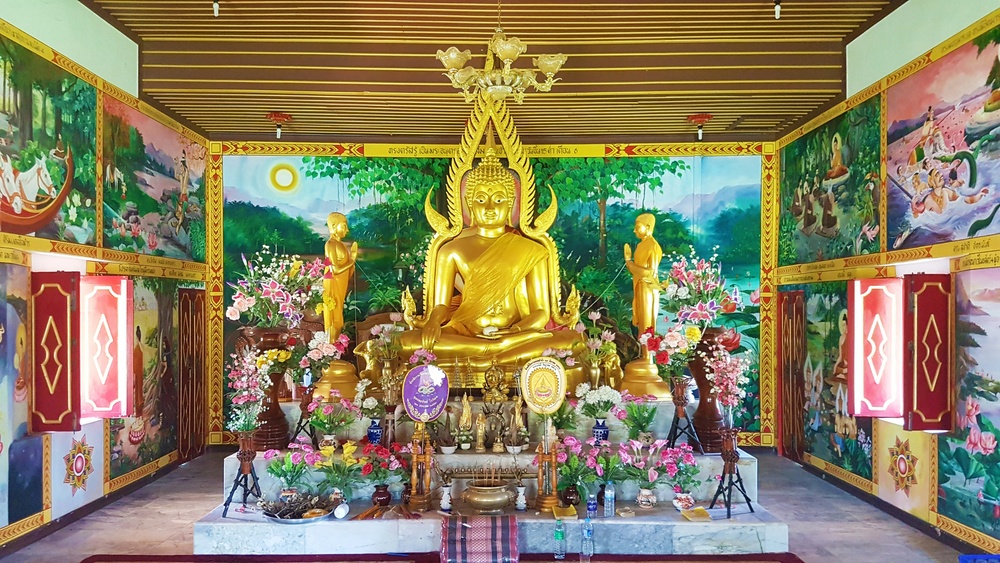India, the land where Buddhism was born over 2,500 years ago, still echoes with the profound teachings of the Buddha. Across its diverse landscapes, from the icy Himalayan valleys to lush forested hills, lie ancient and active Buddhist monasteries in India—centers of spiritual reflection, cultural heritage, and deep-rooted wisdom.
These monasteries are not just religious centers; they are places where time slows down, minds calm, and hearts open. Whether you are a spiritual seeker, a traveler searching for peace, or a culture enthusiast, exploring these sacred sites can be a deeply enriching experience.
The Spiritual Significance of Buddhist Monasteries in India
Buddhist monasteries in India hold immense historical and spiritual value. Many are located at or near places closely associated with the life and teachings of the Buddha—such as Bodh Gaya, Sarnath, and Kushinagar. Others were built centuries later by Buddhist communities who carried forward his legacy. These monasteries serve as:
- Centers for learning Buddhist philosophy, scriptures, and rituals
- Sanctuaries for meditation and spiritual practice
- Architectural landmarks reflecting various Buddhist schools—Mahayana, Vajrayana, and Theravada
- Cultural hubs preserving Tibetan, Himalayan, and Indian Buddhist traditions
Top Buddhist Monasteries in India You Should Explore
Let’s take a journey through some of the most revered and beautiful Buddhist monasteries in India:
1. Tawang Monastery, Arunachal Pradesh
Tawang Monastery is the largest in India and the second-largest in the world. Nestled amidst snow-capped peaks, this 17th-century monastery is home to over 400 monks. It offers not only spiritual insight but also breathtaking views and rich collections of Buddhist manuscripts and thangkas.
2. Hemis Monastery, Ladakh
One of the wealthiest monasteries in the country, Hemis is known for its grand annual festival celebrating the birth of Guru Padmasambhava. Its massive courtyard, sacred relics, and colorful frescoes make it a key stop on any Buddhist trail in India.
3. Rumtek Monastery, Sikkim
Perched on a hill near Gangtok, Rumtek is the seat of the Karmapa of the Karma Kagyu lineage. It is known for its golden stupa, beautifully designed prayer halls, and peaceful surroundings. The monastery serves as both a religious and educational institution.
4. Namdroling Monastery, Karnataka
Located in Bylakuppe, one of the largest Tibetan settlements in India, Namdroling is famous for its giant golden Buddha statues and vibrant Tibetan architecture. It is also a major center for Buddhist studies and monastic life, attracting thousands of monks and visitors each year.
5. Ghoom Monastery, West Bengal
Situated just outside Darjeeling, Ghoom Monastery is one of the oldest Tibetan monasteries in India. Its serene ambiance, striking statue of Maitreya Buddha, and collection of rare books make it a quiet and spiritual haven.
6. Mindrolling Monastery, Dehradun
This sprawling complex is one of the six major monasteries of the Nyingma tradition. It is known for the Great Stupa, standing 60 meters tall, and its beautifully landscaped gardens. The monastery offers teachings, prayer ceremonies, and peaceful spaces for visitors.
7. Tashi Lhunpo Monastery, Karnataka
Also located in Bylakuppe, Tashi Lhunpo is a replica of the original monastery in Tibet. It serves as the seat of the Panchen Lama and is known for its detailed artwork, massive prayer wheels, and calm environment perfect for meditation.
8. Sanchi Buddhist Complex, Madhya Pradesh
While not an active monastery, Sanchi is home to some of the oldest Buddhist monuments in the world. The Great Stupa, built by Emperor Ashoka, is a UNESCO World Heritage Site and a silent reminder of Buddhism’s ancient legacy in India.
9. Mahabodhi Temple Complex, Bodh Gaya, Bihar
This sacred site marks the very spot where Siddhartha Gautama attained enlightenment under the Bodhi tree. Surrounded by monasteries built by various Buddhist nations, Bodh Gaya is one of the most spiritually charged destinations in India.
10. Key Monastery, Himachal Pradesh
Built at 13,000 feet above sea level in the Spiti Valley, Key Monastery is an architectural marvel. It resembles a fort with its tiered structure and holds ancient murals, scriptures, and images of Buddha. The high-altitude silence makes it a perfect spiritual retreat.
When and How to Visit
- Best Time to Visit: Most Buddhist monasteries in India are in hilly or remote regions, so the best time to visit is from March to June and September to November.
- What to Wear: Modest, comfortable clothing is recommended. Carry warm clothes if you’re visiting Himalayan monasteries.
- Etiquette Tips: Remove shoes before entering, remain quiet, and seek permission before taking photos, especially during rituals.
What You’ll Gain from the Experience
Visiting Buddhist monasteries in India offers more than just visual beauty—it provides a chance to:
- Experience the calm and clarity of silent prayer halls
- Learn about Buddhist teachings and values like compassion, mindfulness, and non-attachment
- Interact with monks and participate in meditation sessions
- Witness centuries-old art, architecture, and sacred texts
Final Thoughts
In a world that often feels fast-paced and noisy, Buddhist monasteries in India offer rare sanctuaries of peace and wisdom. Whether nestled in Himalayan valleys or hidden in southern plains, these sacred sites invite you to pause, breathe, and reflect. They carry the timeless energy of a philosophy rooted in compassion, discipline, and inner awakening.
So, if your soul is searching for serenity, set your path toward these ancient monasteries—where stillness speaks, and wisdom waits in every corner.


